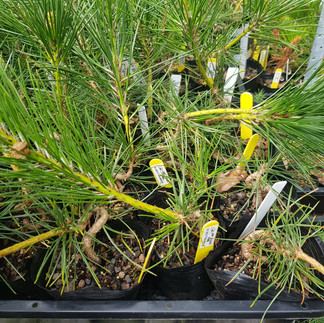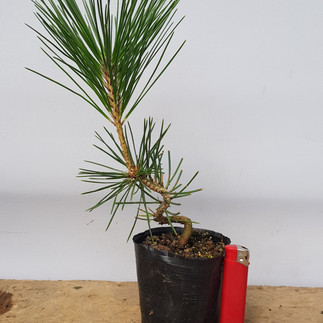With the turn of the month comes astronomical autumn. (well 26th August).
Anyway, today I've been having a look at some of the starter projects that began in the last couple of years.
The Japanese Black Pine have been growing like crazy. I have been concentrating on getting the trunks to thicken for the last two years and this will continue for the next two or three growing seasons. during this time the ones that are ready will be wired to get some good wiggles in the trunk while they are still flexible. These bends may look exaggerated to begin with but as the tree grows the bends will straighten out slightly so getting in the severe bends now will ensure good trunk lines with lots of character when the trees mature.
I will be selling a limited number of these trees at this stage for people that would like to do it themselves.
I wanted to make some exposed root and root over rock style bonsai starter for people to experiment with, so I planted some different varieties into very deep 'root training' plant cell trays. They have vertical fluting which train the roots to grow downwards. I only planted them at the beginning of the year but great progress has been made already especially by the trident maples and cotoneasters. There are also a few satsuki among them but I will leave them a lot longer before attempting to check them out. Given the success of these I will plant up another tray.
Separating air layers can be done when you see signs that they have enough roots. Don't be tempted to separate them if you think they don't have enough roots. They can easily stay on the tree for a few weeks more or even over winter if needed.
Make efforts to correct flaws in the rooting such as one sided rooting by peeling some of the callous tissue with a sharp blade and applying a rooting stimulator.
For layers that have plentiful all round roots go ahead and pot them up.
Using sharp tools, cut the stub from the underneath of the roots. Don't rush in a try to cut it in one go. It is far better to take thin slices as you get near the finish of the cut because this won't crush the cambium in front of the blade as the tool bites in. If you leave it, it will rot and start a process that we don't want in the pot. Seal the cut with a wound sealant.
It can be a good idea to give the new trees new roots a quick soak in a tonic solution such as Rhizotonic.
Be gentle but don't be afraid of disturbing the roots in order to spread them out for the best nebari. Doing this at this early stage will save a lot of aggravation later on.
By planting in akadama the roots will grow well and heal quickly.
You can cut back excess foliage but it is important to keep the end buds on several twigs and branchlets because they will send auxin to the cut areas of the roots and promote fresh, healthy root growth.
Once the tree is potted, make sure to secure it by any means possible. Many layers fail because of movement breaking off the new root growth. Place the tree out of drying wind and sun for a couple of weeks and be sure to keep an eye on it without disturbing it too much. (Don't keep picking it up and putting it down again. It will break the fine root hairs it is depending on.)































































Comments